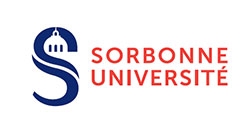
Paris Physics Master





CONDENSED MATTER: FROM FUNDAMENTALS TO NANOSCIENCES
The course has two objectives: (1) making a link between microscopic properties of solids and macroscopic physical phenomena, (2) becoming familiar with the models used for the interpretation of the latter. Different fields of application of the physics of materials will be presented.
The topics covered include:
Introduction to condensed matter physics: cohesion in ordered solids (from metal to insulator); basic properties
Atoms vibrations (network dynamics): normal modes of oscillation of a linear (1D) monoatomic or diatomic chain, dispersion relation, limit conditions and frequency quantification. Generalization to the 2D and 3D cases. Sound propagation
Thermal energy treatment - Phonons: the linear chain of atoms viewed as quantum harmonic oscillators, phonons, Einstein and Debye models, thermal capacity. Thermal conductivity, interaction with light or particles
Crystalline structures: Bravais network and symmetries. Reciprocal network. Experimental probes of real space (near-field microscopy) and reciprocal space (X-ray or particle diffraction)
Electrons in a solid: from nearly free to subject to a periodic potential. Bloch theorem, tight-binding model (linear combination of atomic orbitals), Brillouin zone and electronic band structure
Electronic and optical properties: from theoretical models to real compounds
Semiconductors: general properties and band structure. Effective mass concept, holes concept. Intrinsic or doped semiconductors. P-n junctions and applications
Initiation to current research topics: spintronics, multiferroics
The Condensed Matter Physics course is given by Nathalie Jedrecy and Edouard Boulat.